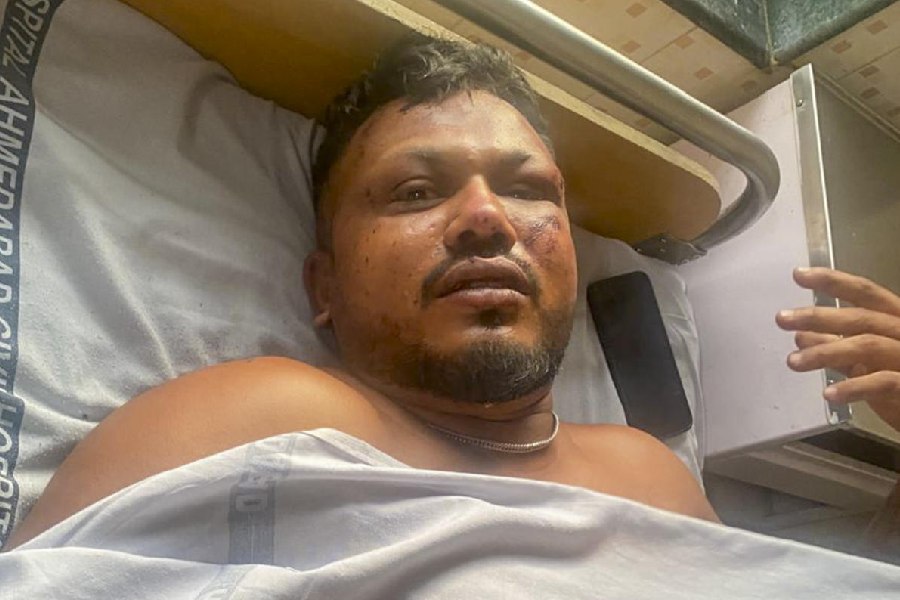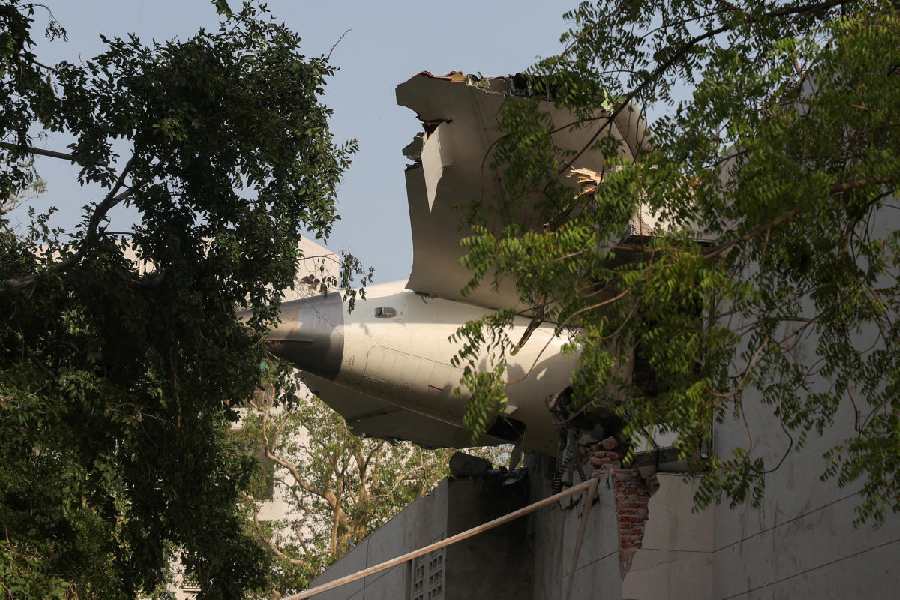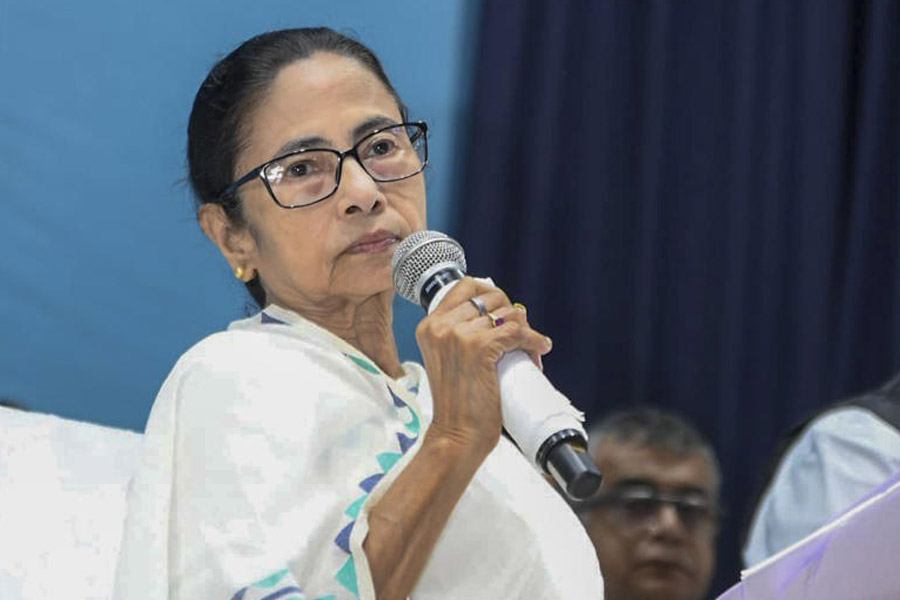The convening of a national religious and political leaders' convention for the abolition of female foeticide and infanticide by the national commission for women, the Indian Medical Association and the UNICEF was an utterly erroneous step, to give it the most charitable interpretation. It is a perfect example of how far right the political discourse has shifted in India, and how ill-conceived attempts to shore up women's rights by appeals to so-called
religious heads can become counter-
productive.
The 2001 census clearly displays how the lives of women, girl-children, and even female embryos, continue to be severely imperilled in India. According to the census, although the sex ratio as a whole has improved marginally to 933 women per 1,000 men, the ratio of surviving girls up to the age of six per 1,000 boys of the same age has fallen from 945 in 1991 to 927 in 2001. In West Bengal, the ratio of children below six decreased from 955 girls per 1,000 boys in 1991 to 923 girls per 1,000 boys in 2001.
According to the Tamil Nadu police, techniques such as loosening the umbilical chord so the baby bleeds to death; asphyxiation by placing the baby beneath a pedestal fan at full blast, feeding the baby hot, spicy food and even tobacco juice, are used to kill girl children. It is obvious that a serious, sustained all-India campaign is required in order to first halt these atrocities and reverse the trend.
It is however impossible to fight this through the kind of convention as the NCW, IMA and UNICEF wished to do. Female foeticide is caused by a deep-rooted neglect and devaluation of women in our society, regardless of the religious denomination of the people concerned. Therefore, the idea that statements or orders by religious heads will lead to a reversal of social attitudes towards women and girls is based at best on despair for campaigns by secular forces, and at worst on an unstated agenda of those currently in power of legitimizing the entry of religious forces.
Any criticism of the Delhi meeting that is merely technical serves to hide deeper political implications. The IMA asserts that the invitation was extended to such people because they command a strong following. Evidently, the organizers believe that the prejudices and authoritarian, anti-women views fostered and preached by fundamentalists like Sadhvi Rithambara should be given political recognition instead of being reconsidered. That people who have knowledge of medical science can preach alliance with such obscurantists shows how deeply threatened all modern, scientific values and indeed the whole of civil society is.
The meeting led towards heavy saffronization. Sadhvi Rithambara argued, along with others, that when the shastras forbid the taking of life, abortion, as much as sterilization, constitutes a sin, and cannot be exculpated at all. Widow remarriage is also considered a sin, while widow immolation is a great deed. When people with such views are invited, that is precisely the kind of argument that can be expected. Although early reformers had used shastric arguments to pilot through their desired reforms, this model is clearly of doubtful value now. If we are to force our arguments into a shastric mould today, at best we will be dropping the existing discourse of rights and secular morality in favour of a pro-fundamentalist discourse. The more likely development will be a gross restriction of human rights under the pressure of the far right.
According to another speaker, Swami Ramanand of Delhi, shastras can be amended only by those who have attained the status of rishis. Consequently, if shastric injunction becomes the key weapon in a campaign to save the female foetus, then one will have to accept that these injunctions, as interpreted by self-proclaimed rishis, may begin to encroach on women's rights in myriad ways. Those wishing to mobilize modern rishis should be suspected of harbouring other agendas under the garb of protecting women.
It was also asserted in the meeting, that women may become sati and must worship their husbands as parameshwars. In the end, the speeches of these 'religious leaders' implied that all abortion laws should be scrapped, since it is the liberal abortion law that leads to female foeticide.
It is essential to make a distinction between the two issues of female foeticide and infanticide. Both occur due to a deep-rooted prejudice against women embedded in our society, which is reflected by religious leaders. To curb these crimes against humanity, it is necessary to pose the issue in clearly modern, non-religious terms. The old strategy of using religious texts to counter orthodox religious reactionary pressures has always been fraught with danger. Increasingly, the marginal benefits of this strategy have been outweighed by the communalizing trend.
Today, when for close to two decades, the Rashtriya Swayamsevak Sangh has carried on a drive to bring together all Hindu 'leaders' under a common banner, the approach to religious heads was certain to open the doors to far right religio-political forces. In the name of halting female foeticide, these 'leaders' have advocated scrapping constitutional rights of women. Already, although adult women have the right to demand abortion without anybody's consent, many hospitals and nursing homes, often those run by religious organizations, insist on the husband's consent.
While this makes it difficult for single women to terminate unwanted pregnancies, it also places married women under the control of their husbands. Such cases might result in selective abortions (female foeticide).
To ensure a better society where women have equal substantive rights as men, and both have more rights and freedom, we need a struggle against female foeticide. Calling in religious heads will only result in providing the priests with government backing for churning out their diverse combinations of patriarchal and communal views.
The NCW's move, and the IMA's justifications for the meet should be condemned. It has been asserted that people like Rithambara, Ramanand and the Shankaracharya of Kanchi spoke convincingly against female foeticide. Since the calls for abrogation of legal rights went unchallenged, including from the sponsors
of the meeting, it is highly doubtful that the NCW was bowled over by their speeches. As reported, only Swami Agnivesh
had a critical attitude to the the whole
situation.
What is most alarming are the opinions expressed by certain women's rights activists, like Madhu Kishwar, to the effect that it is useful to invite religious leaders on the ground that unlike the bureaucracy, they will not be a money-guzzling lot. Kishwar asserts that these people come into daily contact with common people, and help in creating a moral and ethical consensus. One might as well ask the women's rights movement to fold up in favour of religious leaders.
Finally, let us be clear about the issue of freedom of expression. Instead of building bridges with those who wish to uphold and bring back patriarchal injunctions of the worst sort, we need to convince their followers that they are pr- eaching harmful rituals and practices. Religious rituals strengthen preferences for sons. To expect those who advocate such rituals to be committed to a genuine campaign for female foeticide is laughable.
And it is here that the links become clear. Less than a couple of months back, Murli Manohar Joshi, the Union human resources development minister and Bharatiya Janata Party leader, had advised parents to follow the nostrums of the Susruta-Samhita if they wanted sons to be born. The NCW, Joshi and the 'rishis' share a common agenda - a sustained effort at getting rid of secularism and imposing a new culture. Gender equality, not for the first time in Indian history, is being used by such people as a rhetorical cover for their offensives.
 Friday, 13 June 2025
Friday, 13 June 2025









